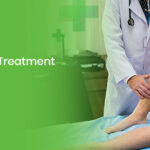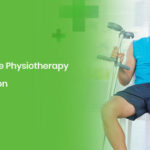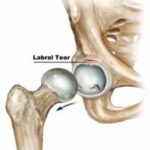Sub-Acute Soft Tissue Injury

We recommend that any case with Sub-Acute Soft Tissue Injury seek professional advice for accurate diagnosis and its specific treatment. However, the following primary care can be initiated at home or the spot of injury :
The Initial Treatment can be abbreviated as PRICE
- PROTECTION – the injured part should be protected from any further complications. This may include bracing, strapping, or Kinesio-tapping.
- REST – complete or relative rest depending on the severity and injured tissue can be undertaken to avoid further damage.
- ICE – ice should be applied for 10-15 mins every 2-3 hours to reduce the inflammation.
- COMPRESSION – compression is done to minimize swelling and support the part.
- ELEVATION – elevation is done to assist the drainage of swelling into nearby lymph nodes.
If the symptoms don’t subside within 72 hours of injury we highly recommend getting a professional opinion for the problem.
The common Soft Tissue Injury includes –
- Muscle Strains
- Ligament Sprains
- Tendon injuries
- Other Soft Tissue Injuries (e.g. Fat Pad, Myofascial tissue, joint capsules, skin, and other connective tissue)
The Harmful Factors that should be avoided during the initial 72 hours of Injury include-
- Heat – heating the injured part increases swelling and bleeding.
- Alcohol – consumption of liquor increases swelling and bleeding so it must be avoided
- Exercise: exercising the injured area may further increase the injury. Seek a physiotherapist’s advice before resuming sporting activity or exercises.
- Massage: massage may increase the injury and swelling and bleed associated with it.
While the following advice is generic and may vary depending on the injury diagnosis, there are several treatment goals during the subacute phase.
Treatment
1- Pain and inflammation control
The patient’s pain may not allow movement, apart from the preliminary approach as stated above the patient may need to undergo physiotherapy treatment which may include the application of physiotherapy modalities and other physiotherapy techniques to relieve pain.
Anti-inflammatory medication may help reduce pain and swelling. Supportive Kinesio taping can support the injured soft tissue.
2- Achieve complete Range of ankle Movement
As a result of immobilization, stiffness may occur which needs to be mobilized to achieve a full range of movement. Precaution should be taken as scar newly formed is not mature enough and is stiff. The tendon needs to be stretched appropriately with prior heating and soft tissue massage. Neural stretches to elongate the nerves which may entrap along its path.
3- Restore Muscle Strength
The muscles around the injured area should be strengthened to achieve the before injury status, moreover overall fitness should be addressed to reverse the effects of immobilization.
4- Normalize Foot Biomechanics
Any trivial trauma of the foot may alter the foot’s normal biomechanics and in the long run, may affect the joints above or below the injured part. So it should be properly assessed and treated or proper guidelines/ orthotic support should be given to the patient to avoid it.
5- Speed, Power, Proprioception & Agility training
Sport-specific training may include high speed, agility, plyometrics, and power drills to rehabilitate the athlete back to his sporting activity. Proprioception and balance are incorporate to gain back the joint sense and prevent the reoccurrence of the problem.
6- Return to Sport/ functional day to day activity
The physiotherapist should discuss sports-specific goals and frame the schedule and training to achieve optimal fitness level to resume the sport.





